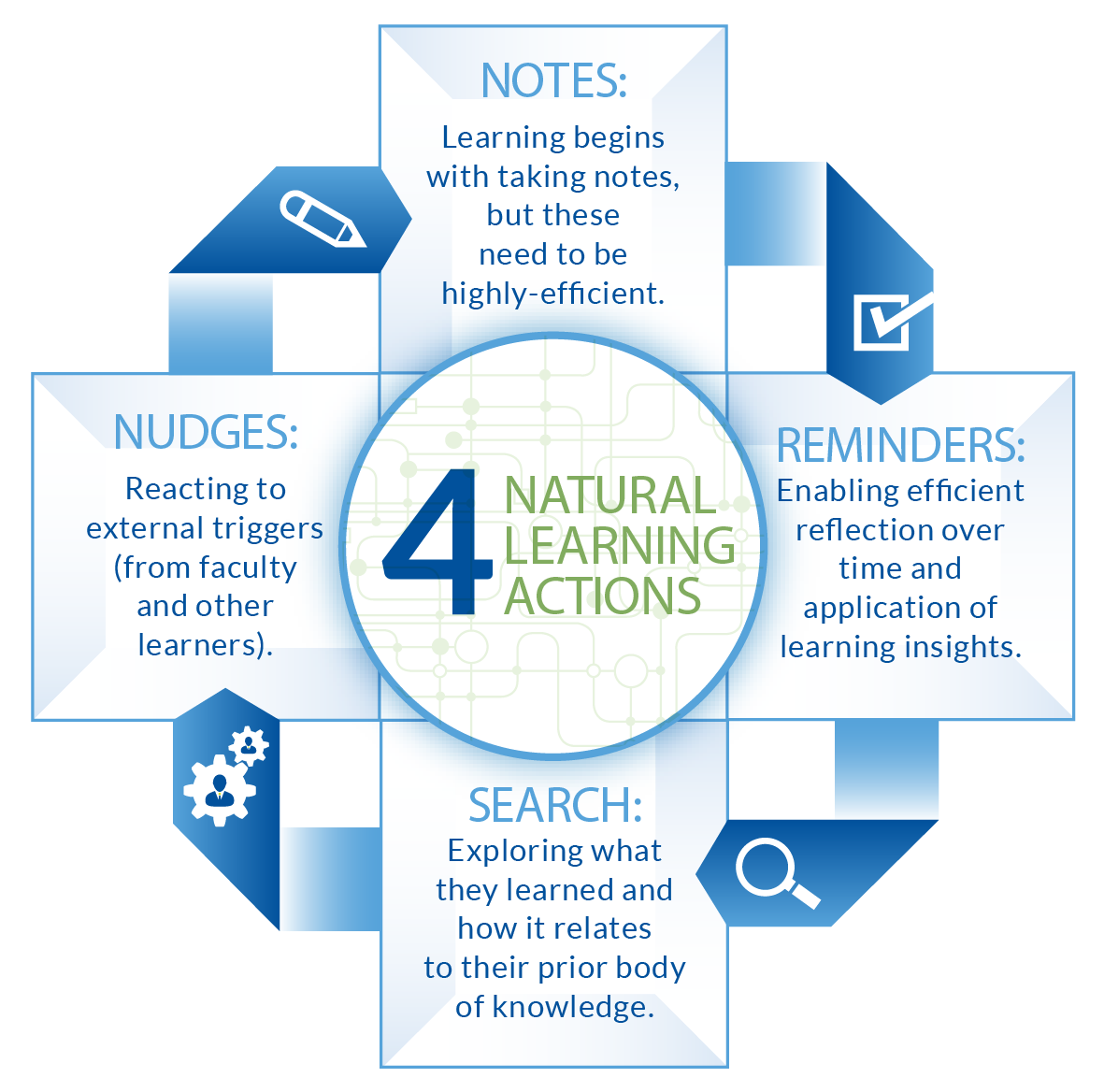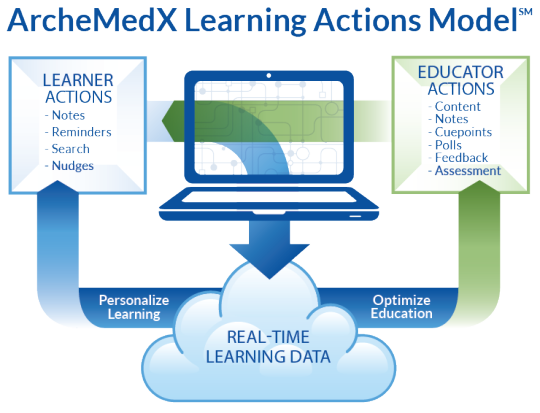Online Learning Should Come Naturally
Early field research by the ArcheMedX team, as highlighted in this graphic, identified four natural learning actions (taking notes, setting reminders, searching for related information, and responding to external nudges) that learners rely on in an attempt to effectively consume information and overcome the limitations of working memory.
However, this research discovered that because clinicians have historically relied on their own makeshift approaches to take these actions they end up creating additional barriers to learning, not fewer. The reality is that these learning actions need to be integrated into the overall learning experience to simplify the process of learning.


